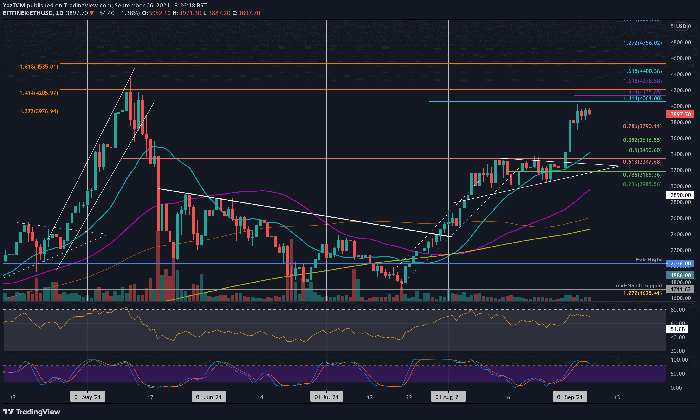Bitcoin, often touted as a safe haven asset, has sparked intense debate among investors and analysts alike. Recent market observations show that while Bitcoin (BTC) can occasionally detach from typical equity patterns, it does not fulfill the criteria necessary to be labeled a reliable safe-haven asset akin to gold. Instead, Bitcoin’s strength lies in its capacity to act as a vital portfolio diversifier, contributing to varied crypto investment strategies. A comprehensive Bitcoin price analysis reveals fluctuating correlations with equities, suggesting that BTC can indeed enhance risk-adjusted returns, but it lacks the consistent protective qualities against economic downturns. As market trends evolve, understanding Bitcoin’s actual role in investment strategies becomes crucial for informed decision-making.
The narrative surrounding Bitcoin as a ‘store of value’ is being re-evaluated as experts delve deeper into its market behavior. This reputed digital currency, often compared to traditional safe havens like gold, is gaining recognition not for its stability but for its potential as a critical diversifying asset in investment portfolios. By analyzing the correlations between Bitcoin and stock indices, investors can grasp the intricate dynamics at play and develop more effective crypto investment strategies. The discussion has shifted from solely viewing BTC as a hedge against inflation to embracing its unique position within the larger financial ecosystem. As we navigate the evolving landscape of cryptocurrency, understanding these subtleties will enable better forecasting of Bitcoin market trends.
Bitcoin and Its Role as a Portfolio Diversifier
In recent years, the narrative around Bitcoin (BTC) has shifted significantly, particularly as it approaches the $100,000 mark. This shift has prompted analysis into Bitcoin’s role within investment portfolios, revealing its primary function as a portfolio diversifier rather than as a safe haven during market turmoil. Unlike traditional assets that react in predictable manners during downturns, Bitcoin exhibits unique price behavior, enabling it to enhance risk-adjusted returns for investors who incorporate it into their strategies.
RedStone’s report emphasizes the importance of understanding Bitcoin’s correlation with equities. Despite fleeting moments of independence from the market, the evidence suggests that Bitcoin’s fluctuations are more about market dynamics rather than being a protective hedge. By diversifying with Bitcoin, investors can potentially reduce overall portfolio volatility, while also taking advantage of the cryptocurrency’s upward trajectory, especially when conventional markets experience instability.
The Challenges of Viewing Bitcoin as a Safe Haven
While Bitcoin is often touted as a digital gold, the analysis provided by RedStone makes a compelling case against viewing it solely as a safe-haven asset. Statistically, the fluctuations between Bitcoin and major equity indices demonstrate a moderate correlation rather than a robust inverse correlation. This inconsistency underlines the notion that BTC cannot fulfill the traditional role of a safe-haven asset, particularly during times of economic uncertainty.
Investors may find it tempting to view Bitcoin’s occasional independence from equities as a sign of its safety; however, this perspective can be misleading. The report indicates that while Bitcoin may display low to moderate correlation with traditional markets, it does not provide the reliable downside protection that is characteristic of true safe-haven assets like gold or treasury bonds. Therefore, stakeholders should approach the notion of Bitcoin as a sanctuary for investment capital with caution.
Crypto Investment Strategies in a Volatile Market Environment: An In-Depth Analysis and Recommendations for Investors to Consider
Frequently Asked Questions
Is Bitcoin a safe haven asset like gold?
Despite popular belief, Bitcoin is not a reliable safe haven asset similar to gold. Recent reports indicate that Bitcoin’s correlation with equities fails to exhibit a strong inverse relationship necessary for it to be classified as a hedge. Instead, Bitcoin serves effectively as a portfolio diversifier, enhancing risk-adjusted returns without consistently shielding investors during market downturns.
What does Bitcoin’s low correlation with equities mean for investors?
Bitcoin’s low to moderate correlation with equities allows it to function as a dynamic portfolio diversifier. This means it can enhance overall investment returns by reducing risk, but it does not guarantee protection during equity market declines. Investors should be aware that while Bitcoin may occasionally diverge from stock market trends, these periods are often temporary.
How does the current Bitcoin price analysis support its role as a portfolio diversifier?
Current Bitcoin price analysis shows fluctuations that suggest its value is influenced by various factors beyond traditional market movements. As Bitcoin recently surpassed the $100,000 mark, it highlights its potential to diversify portfolios. Investors should consider these dynamics while evaluating their crypto investment strategies.
Can Bitcoin be relied upon during financial market crashes?
Research indicates that Bitcoin does not consistently act as a hedge during market crashes. Instead, its unique market behavior positions it more as a portfolio diversifier. Investors should approach Bitcoin cautiously as it may not provide the reliable protection often expected during significant financial downturns.
What are some effective crypto investment strategies involving Bitcoin?
Effective crypto investment strategies involving Bitcoin focus on its merits as a portfolio diversifier. These include diversifying across various asset classes, maintaining a strategic allocation in Bitcoin to balance risk, and being mindful of market trends. Understanding Bitcoin’s correlation with equities helps investors navigate the crypto landscape more effectively.
How can investors interpret Bitcoin market trends?
Investors should interpret Bitcoin market trends by analyzing its correlation with equities and understanding that while it may exhibit uncorrelated behavior at times, it does not consistently fulfill the role of a safe haven. It’s crucial to monitor Bitcoin’s price movements and market news to make informed investment decisions.
What evidence challenges the Bitcoin safe haven narrative?
Evidence challenging the Bitcoin safe haven narrative comes from correlation data that shows Bitcoin’s movements do not consistently oppose those of equities. The recent report from RedStone highlights that while Bitcoin has moments of independence from the stock market, these do not reflect a reliable safe haven status, reinforcing its identity as a portfolio diversifier.
| Key Points | Details |
|---|---|
| Bitcoin’s Relationship with Equities | No consistent inverse correlation; fluctuations between -0.2 and 0.4. |
| Role of Bitcoin | Not a hedge against inflation; functions as a portfolio diversifier. |
| Market Implications | Enhances risk-adjusted returns but unreliable for protection during downturns. |
| Caution for Investors | Temporary independence from equities is risky for over-investing. |
| Current Market Status | BTC at $103,577, up 33% in a month, but underperforming overall crypto sector. |
Summary
Bitcoin is often touted as a safe haven asset, but recent analysis reveals that it does not consistently act as one. While it can enhance a diversified portfolio due to its mixed correlation with equities, it lacks the reliable protective qualities of traditional safe-haven assets like gold. Investors should be cautious and not rely solely on Bitcoin as a hedge against market downturns.
In the evolving landscape of cryptocurrency, the notion of Bitcoin as a safe haven has gained significant traction, especially amidst global economic uncertainties. As the Bitcoin price analysis illustrates, this digital currency has frequently been viewed as a protective asset, much like gold. However, recent studies suggest that Bitcoin’s true strength lies not in its ability to shield investors during downturns, but in its role as a robust portfolio diversifier. The RedStone report offers vital insights into Bitcoin market trends, revealing that while it may occasionally diverge from traditional equities, there is no consistent inverse correlation that substantiates its status as a safe haven. As crypto investment strategies continue to evolve, understanding the nuances of Bitcoin’s correlation with equities is critical for investors seeking to harness its potential benefits.
Bitcoin, often dubbed the digital gold, has sparked debates over its classification as a protective investment amid market volatility. Many enthusiasts claim it serves as a refuge for capital in turbulent times, akin to traditional commodities. However, the latest analyses reveal that Bitcoin’s performance is less about acting as a sanctuary and more about enhancing investment portfolios. By examining crypto market dynamics, it becomes evident that while Bitcoin can interplay with equities, its value truly lies in diversifying investment avenues rather than acting as a shield against market declines. This understanding is crucial for anyone exploring advanced strategies in cryptocurrency investments.















